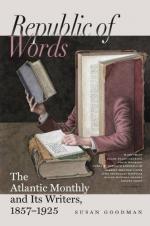The Scandinavian Mormons are very clannish in their disposition. They occupy some settlements exclusively, and in Salt Lake City there is one quarter tenanted wholly by them, and nicknamed “Denmark,” just as that portion of Cincinnati monopolized by Germans is known as “over the Rhine.” Like their English and Welsh associates, they belonged to the lowest classes of the mechanics and peasantry of their native countries. They are all clownish and brutal. Their women work in the fields. In their houses and gardens there is no symptom of taste, or of the recollection of former and more innocent days; while in every cottage owned by Americans there is visible, at least, a clock, or a pair of China vases, or a rude picture, which once held a similar position in some farm-house in New England.
It is not intended to discuss here the cardinal points of the Mormon faith, for the subject is too extensive for the limits of this article. A great misapprehension, however, prevails concerning polygamy, that it was one of the original doctrines of the Church. On the contrary, it was expressly prohibited in the Book of Mormon, which declares:—
“Behold, David and Solomon truly had many wives and concubines, which thing was abominable before me, saith the Lord. ... Wherefore hearken to the word of the Lord: There shall not any man among you have save it be one wife, and concubines he shall have none; for I, the Lord God, delight in the chastity of women.”—p. 118.
Up to this date, there have been four eras in the history of polygamy among the Mormons: the first, from about 1833 to 1843, during which it was practised stealthily only by those Church leaders to whom it was considered prudent to impart the secret; the second, from 1843 to 1852, during which its existence was known to the Church, but denied to the world; the third, from 1852 to 1856, during which it was left to the discretion of individuals whether to adopt its practice or not; and the fourth, since 1856, when its acceptance was inculcated as essential to happiness in this world and salvation in the next. It was the inevitable tendency of Mormonism, like every other religious delusion, from the advent of John of Leyden to that of the Spiritualists, to disturb the natural




